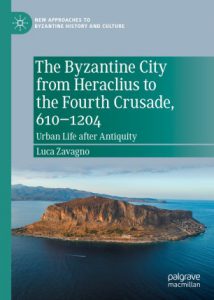
Asst. Prof. Luca Zavagno of the Department of History has published his third monograph, “The Byzantine City From Heraclius to the Fourth Crusade, 610-1204.” The book was recently issued by Palgrave McMillan as part of its “New Approaches to Byzantine History and Culture” series.
“This book explores the Byzantine city and the changes it went through from 610 to 1204,” the publisher’s description states. “Throughout this period, cities were always the centers of political and social life for both secular and religious authorities, and, furthermore, the focus of the economic interests of local landowning elites.
 “This book therefore examines the regional and subregional trajectories in the urban function, landscape, structure and fabric of Byzantium’s cities, synthesizing the most cutting-edge archaeological excavations, the results of analyses of material culture (including ceramics, coins and seals) and a reassessment of the documentary and hagiographical sources. The transformation the Byzantine urban landscape underwent from the 7th to 13th centuries can afford us a better grasp of changes to the Byzantine central and provincial administrative apparatus: their fiscal machinery, military institutions, socioeconomic structures and religious organization.”
“This book therefore examines the regional and subregional trajectories in the urban function, landscape, structure and fabric of Byzantium’s cities, synthesizing the most cutting-edge archaeological excavations, the results of analyses of material culture (including ceramics, coins and seals) and a reassessment of the documentary and hagiographical sources. The transformation the Byzantine urban landscape underwent from the 7th to 13th centuries can afford us a better grasp of changes to the Byzantine central and provincial administrative apparatus: their fiscal machinery, military institutions, socioeconomic structures and religious organization.”
